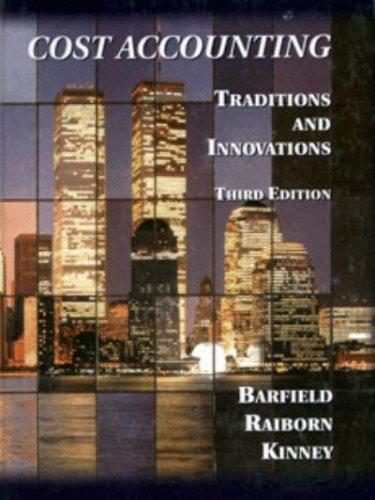In 1981 EEOCS [Equal Employment Opportunity Commission] local field office wrote me a letter saying they had
Question:
In 1981 EEOCS [Equal Employment Opportunity Commission] local field office wrote me a letter saying they had reason to believe / didn't have enough women “food servers" and “busers.” No woman had complained against me. So the EEOC advertised in the local paper to tell women whose job applications we had rejected—or even women who had just thought of applying—that they could be entitled to damages. Twenty-seven women became plaintiffs in a lawsuit against me. The EEOC interviewed me for hours to find out what kind of person I was. I told them in Sicily where I came from I learned to respect women. I supplied them with hundreds of pounds 616 PART rV Cost Planning ofpaper. I had to hire someone full time for a yearjust to respond to EEOC demands. Six months ago I finally settled. I agreed to pay $150,000 damages and as jobs open up, to hire the women on the EEOC's list. Even if they don V know what spaghetti looks like! I have to advertise twice a year even if I have no openings, just to add possible female employees to my files. I also had to hire an EEOC-approved person to teach my staffhow not to discriminate. I employ 12 food servers in these two restaurants. Gross sales, around $2 million. How much did it all cost met Cash outlay, about $400,000.
What the government's done to me—devastating. I wouldn't wish it on my worst enemy." Thomas Maggiore Phoenix, Arizona
[SOURCE: Peter Brimelow and Leslie Spencer, “When Quotas Replace Merit, Everybody Suffers,” Forbes (February 15, 1993), pp. 80-82 ff. Reprinted by permission of Forbes magazine. © Forbes, Inc., 1994.]
a. Do you think Mr. Maggiore’s cash outlay of $400,000 includes all of the costs he incurred because of the EEOC regulation? Try breaking down the various costs that he may have incurred into three categories: direct costs, indirect costs, and opportunity costs.
b. Are hiring policies based on quotas ethical? How do quota systems affect the economic viability of American firms?
c. If EEOC regulations are intended to right past wrongs, should EEOC guide¬ lines apply differently to immigrant Americans than to second-, third-, and fourth-generation Americans. (Consider, for example, that any immigrant that falls into a protected class qualifies for all U.S. quota programs just like an American whose great-great-great-grandfather was a slave.)
d. How can quota systems have an effect on the quality of American products?
Braf Internet Activities LO1
Step by Step Answer:

Cost Accounting Traditions And Innovations
ISBN: 9780538880473
3rd Edition
Authors: Jesse T. Barfield, Cecily A. Raiborn, Michael R. Kinney





